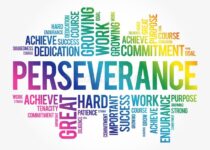Mastering the Customer Buying Journey
Consumers today need to be sure they’re making the optimal purchase, and they’ll weigh every option available before they commit. Increasing competition and providing more opportunities to engage with your ideal buyer persona at each stage of the purchasing process. The buyer’s journey is their mindset, how to articulate their needs and convert them into sales.
What is the Buyer’s Journey
A buyer’s journey is a well-detailed map of the process customers go through when making a purchase decision. It helps businesses understand customers’ behaviour at each stage, Awareness, Consideration and Decision so they can improve sales, support, and marketing strategies to better meet customer needs and increase conversion.
The customer’s purchase journey or trail to purchase,” involves analyzing a problem, identifying possible solutions, and then selecting the best one of the solutions. This journey to purchase can be broken down into four stages.
- Unwitting
- Agony/Problem familiarity
- Awareness of Solution
- Awareness of Providers
Very few purchasers make a completely impromptu decision to buy. Most buying decisions of customers take days, weeks, or months of thought and reflection. And if you are not engaging customers in the meantime, you can forfeit a sale worth thousands of dollars.
They can get information so much more readily now to compare your business and the products or services that you offer with your competition more easily than ever before. Naturally, that is a two-way street. That also means you can win their trust relatively early in their process, before getting to that “Awareness of Providers” phase in their process and comparing you or your competition.
Why Do You Need to Know Your Customer’s Buyer’s Journey?
The buyer’s journey gives you a method of knowing what kind of question your customers will be looking for an answer to, based on the problem that you’re trying to solve. Obviously, buyers who are learning about their problems for the first time, or exploring potential solutions need quite different information from someone ready to purchase.
Understand what your personas need at every step of the buyer’s journey, and you’ll be able to create content that will likely fit their requirements. They’ll come to you naturally, rather than you venturing out to find them when they’re shopping and gathering information.
The majority of marketing aimed at businesses hits the lower end of sales funnels to ultimately find its way to actually reaching prospects who are ready to decide on a purchase. On the flip side of the coin is a heap of chances to establish trust and close deals higher up in the funnel. Keep in mind, that 96% of visitors to websites don’t even get to this very phase “Decision Making Stage”.
The concept is to win over the customers’ trust from the very beginning so that when the buying decision is at the door, you’ll already be there waiting for the solution. Getting the right questions asked throughout each step of the buyer’s journey increases the quality of your leads and enhances it, thus, bringing a return on your marketing strategy.
This is so helpful, in terms of finding out what the buyer’s journey is, why it matters, and how to use it to create more effective sales and marketing operations.
How does the B2B customer journey differ from the B2C customer journey?
Business-to-business (B2B) and business-to-consumer (B2C) buyer journeys vary in prospects’ motivation and sales cycles.
In contrast, the B2C buyer’s journey defines individuals who purchase a product or service to consume themselves or for others whom they take care of. Emotion is the origin of these purchases, and therefore, B2C marketers ought to appeal to the needs and wants of these consumers. Sales cycles might last several months or several seconds whenever the lead is adequately motivated.
A company that buys a product or service for use in an organization delineates the B2B buyer’s journey. ROI-driven, the product B2B sellers offer guarantees efficiency, profitability, or incremental revenue in sales terms. There are longer sales cycles since during each stage, there are several various decision-makers with whom one must negotiate a final purchase.
Customer’s Journey vs. Buyer’s Journey
It’s how you acquire customers, but the customer journey is how you keep them.
The buyer’s journey is what the customers undertake and make choices before they make a purchase. It is here that the business has the role to provide the prospects with the right content at the right moment to enable them to advance further along their journey until they eventually become customers.
The customer journey deals with all that occurs following the buyer’s journey. Companies discover through experience that the initial purchase is merely the start of an association, and so the procedure then becomes one of retention. Companies that continue to support and offer personalized content will eventually gain long-term loyalty.
Both concepts come under the overall heading of customer lifecycle management.
The Three Stages of the Customer Decision Process (Buyer’s Journey)
The journey the customer will undertake in his decision-making process involves these three stages, Awareness, Consideration, and Decision. At each of the various phases, the customer would need to answer a new series of needs and questions to be able to move a step ahead in their purchasing decision. What is meant by this is that you’ll have content offers for current and every stage along the buyer’s journey because otherwise, you could be turning off the buyer by promoting an offer that’s either inappropriate, not related or premature offers. But when tailored to their expectation, then you might just convert them, and in doing so, raise the lifetime value of every customer because they return for more or put out a good word for you.
The Awareness Stage – Researching
The Awareness Stage is where the customer will already have an issue he will want to do some research on, but won’t be searching for possible solutions yet. They might just be conscious that they have an issue but are not yet aware of what questions they should be asking about it, let alone the full grasp of the situation.
Consideration Stage – EVALUATING
In the Consideration stage, at this point, they are researching their options with more intent for a resolution or purchase, however, the purchasers are still not yet prepared to be sold to any particular seller. They begin to discover the pros and cons of each solution.
The Decision Stage – Deciding
In this stage, the buyer is already set to Decide, having done his research in all ways on how to solve a particular problem thoroughly to be highly interested in buying a product or service. They will start doing research on it, looking for reasons and the company, Customers today want to learn before they make any kind of commitment, and that is where you have a chance to make them understand why they should commit to you.
4 Tips for Using Buyer’s Journey in Your Marketing Strategy
Before being in a position to act on the buyer’s journey in your marketing, you will have to know a lot more about the target audience. Then, with ideal content aligned to their very own requirements, guide them step by step along with the buyer’s journey. And make a position for yourself as their trusted client
Having gone through some of the key facts regarding the buyer’s journey, let us explore how to apply them to your sales operation.
1. Establish and Validate Buyer Personas
Buyer personas are descriptions of your ideal customer and typically include information like age, gender, location, interests, and dislikes.
This ensures you deliver the right message. This will then take you to more efficient marketing content and a more efficient buyer journey.
Keep in mind that your customer base evolves. Ensure that you create a separate funnel for every persona so that you are not selling to the wrong crowd.
2. Data will dictate what works.
After you’ve identified who your ideal customer is, you’ll need to create a content pathway that correlates with your sales funnel.
It’s not just about creating relevant content, however. You need to continuously monitor the performance and measure up to expectations. Following are some content ideas for each stage in the buyer’s journey and how you can use data to complement the work.
Awareness
Awareness is the top of your sales funnel, where buyers are aware. Throughout marketing channels by releasing blog posts, landing pages, eBooks, infographics, guides, and social media posts.
Track click-through rates and engage with your targeted content. That gives you an idea of what messaging is suitable and resonates with your target audience.
Consideration
As the middle of the sales funnel, highlight your USP (Unique Selling Proposition) to demonstrate how your solution stands apart. Create engaging and instructive content for your USP, blogs, demos, webinars, testimonials, and white papers.
The customer surveys, the product reviews, and where such feedback identifies any weakness in your business, from product features to content, and what needs to be the priority at this point.
Decision
Leads who get to this point in the sales funnel are at the bottom, quite literally ready to buy a product or service. That said, offer content that addresses sales objections such as price, contract duration, supply problems, or anything else that arises.
Here, you have to gather information from the customers who are converting through regular surveys to understand what influenced their decision to approach your business and what information was most helpful.
3. Map the buyer’s journey
Buyer journey maps show how the customer thinks and behaves at each stage of a journey from awareness to making a decision.
You cannot predict every action, and at a certain point in the buyer’s journey, the buyer will do something that simply cannot be planned for. However, buyer journey maps can offer insights into consumer behaviour and how to take advantage of it.
Think of it as a playbook for your marketing and sales teams that will influence the behaviours of customers through the various stages of consideration all the way to acquisition.
4. Goal Alignment between Sales and Marketing.
Once your marketing team has provided the right content for your prospects, position your sales reps to follow up on each opportunity.
Sales representatives will encounter prospects with different levels of product knowledge. Your representatives will have to address this without being redundant or complex.
Collaboration between sales and marketing are probably two distinct teams, yet having each member of both teams very familiar with the buyer’s journey and customer acquisition process will result in improved content, higher closing rates, and an improved sales journey.
Follow the Buyer’s Journey with a Good CRM
A solid understanding of the purchasing process helps in closing deals more effectively. Using a good CRM simplifies setting up your pipeline and funnel, building long-term relationships with prospects, and automating the sales process.
Conclusion: Understanding the buyer’s process allows companies to remain competitive and serve prospects better in making educated purchasing decisions. On the other hand, by pacesetting your contents and strategies along those same well-defined phases of the buyer’s awareness, consideration, and decision you gain trust, fulfil customer needs, and make the brand credible, you then possess improved personas of buyers and data-driven knowledge, and an aligned marketing and sales team united, resulting in a more informed view on customer behaviours. That is how you actually turn prospects into loyal customers. This is a business plan that will promote additional customer acquisition as well as the establishment of long-term relationships to guarantee continuity of business growth.
Ready to Engage Your Customers at Every Stage of Their Buying Journey?
At GeeksVillage, we don’t just build websites, we craft digital solutions that guide your customers from awareness to decision. With expert web development, reliable hosting, and targeted marketing strategies, we’ll help you connect with potential buyers at the right moment. Let’s work together to make your business the perfect choice when customers are ready to buy!.



